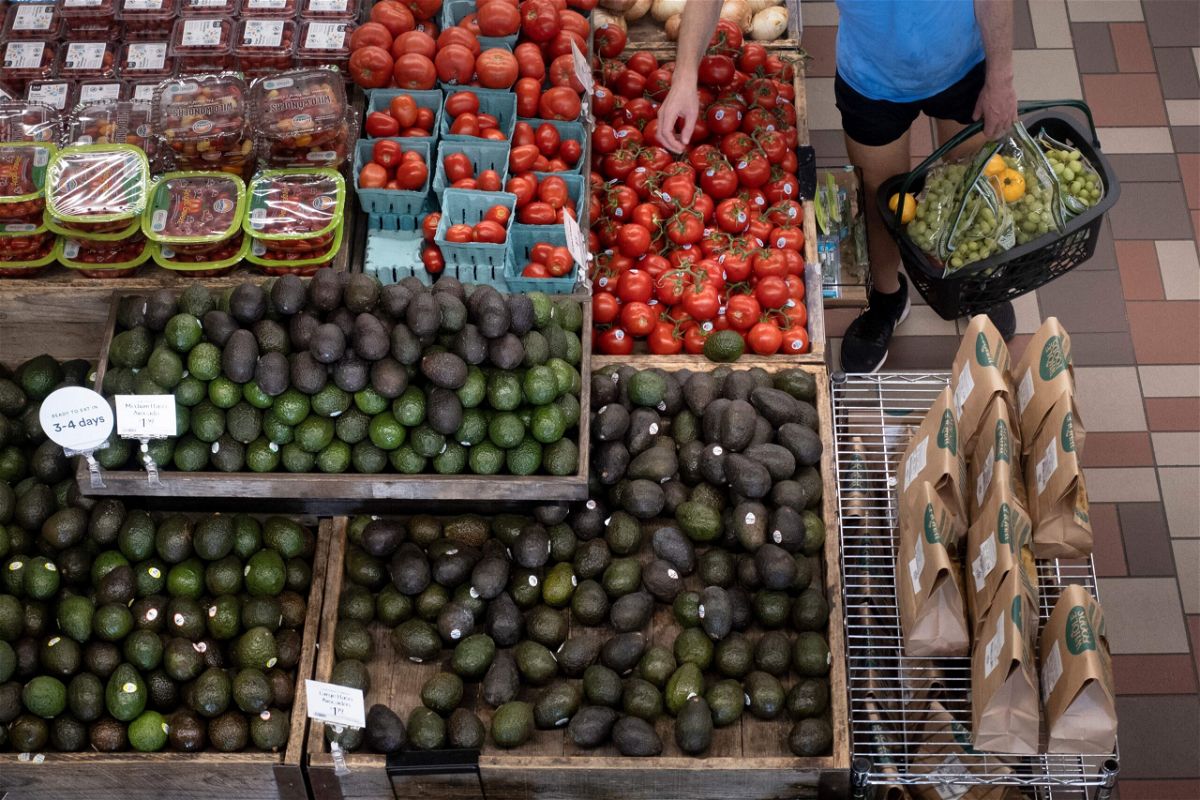Inflation isn’t over yet. Here’s when we should finally see lower prices

High costs for everything have made the pandemic much more difficult for US consumers.
Opinion by Dana M. Peterson for CNN Business Perspectives
High costs for everything, from food and gasoline to automobiles and airline tickets, have made the pandemic that much more difficult for US consumers. So of course, many were relieved to see that consumer prices rose by less than expected in August. But this unfortunately isn’t the beginning of the end of inflation for American households. In fact, consumers may not see lower prices until the latter half of 2022.
The total Consumer Price Index (CPI) rose by 5.3% year-over-year in August after hitting 5.4% on an annual basis two months earlier. The core index, which excludes volatile food and energy components, rose by 4% year-over-year in August after cresting at 4.5% in June. Importantly, the month-over-month rates of increase in each of these gauges (0.3% for the total index; 0.1% for the core measure) were notably slower than they were over the last several months.
These figures tease the hope that the worst of the inflationary pressures may be behind us. But it is likely a false aspiration. Yes, the intensity of price hikes slowed over the summer, but the Delta variant and its disruptions risk another bout of US consumer price spikes in the fall. Even if they do not occur, consumers are unlikely to see lower prices this year thanks to computer chip shortages, rising wage pressures as businesses reopen and the return of rent hikes.
Delta variant
The Delta variant may prompt monthly price increases, and consequently year-over-year readings, to temporarily worsen before improving. The Delta variant has renewed major supply chain disruptions as factories in Asia that provide the United States with consumers goods are shutting down. Also, as spending on in-person services amid the Delta surge — like going to bars and restaurants — remains flat, powerful demand for durable goods, like clothing and furniture, will persist. As businesses struggle to stock their shelves, customers’ prices will continue to rise. This is particularly bad timing with the winter holiday shopping season just around the corner.
Chip shortage
The global semiconductor shortage cannot be solved overnight, suggesting higher prices of new cars and high-tech gadgets that use computer chips. A deficit of used cars to satisfy buyers unable to purchase a new vehicle will simultaneously push these prices higher.
Labor costs
The Delta variant may temporarily slow in-person services activity. But once beyond the shock of the latest virus resurgence, prices at places like amusement parks, sporting events and bars may continue to pop as those businesses reopen amid a major national labor shortage. With some potential workers fearing infections, closed schools keeping many moms at home, older workers retiring, and still-generous unemployment benefits in some states keeping others on the sidelines, labor costs are likely to continue creeping up. Indeed, businesses are already passing some of their higher-wage costs onto customers.
Rents
Meanwhile, the prices of actual rents and owners’ equivalent rent — the money that a homeowner might receive if she put her house up for rent, which typically tracks the ups and downs of actual rents — are likely to take off. During the pandemic, strong demand for owned-home purchases depressed rents. However, as more people are priced out of the hot housing market, and young people who escaped to their parents’ homes outside of city centers during the pandemic return to urban life, demand for rental units should rebound. They will probably rise concurrent with demand, and push consumer prices upward over the next nine to 12 months.
The Delta variant’s prolonging voracious consumer demand for goods in the very short run, as well as ongoing pressures on wages, surges in reopening costs for services like airlines and hotels, and rent normalization, all suggest pinched wallets for many more months to come. Indeed, the CPI may hold in the 4% to 5% year-on-year range into 2022, more than twice its 20-year average of 2%. Also, the total and core Personal Consumption Expenditure inflation rates, which the Federal Reserve watches closely since they measure the prices of goods and services that consumers purchase, may not settle back near the central bank’s 2% target until the second half of 2022.
While nine or 10 more months of lofty prices is not an eternity in economic terms, it may feel like one to consumers. So, if households’ longer-term (three to five years) inflation expectations continue to creep higher, then the Fed may be prompted to signal higher interest rates sooner than expected. Typically, if consumers expect prices to continue rising sharply over the longer run, then the Fed will increase interest rates to prevent runaway inflation from occurring.
So, while the August CPI report was better than expected, prices were still very high in the month. And it is very likely that inflationary pressure probably will be with us for a while longer.
The-CNN-Wire
™ & © 2021 Cable News Network, Inc., a WarnerMedia Company. All rights reserved.

